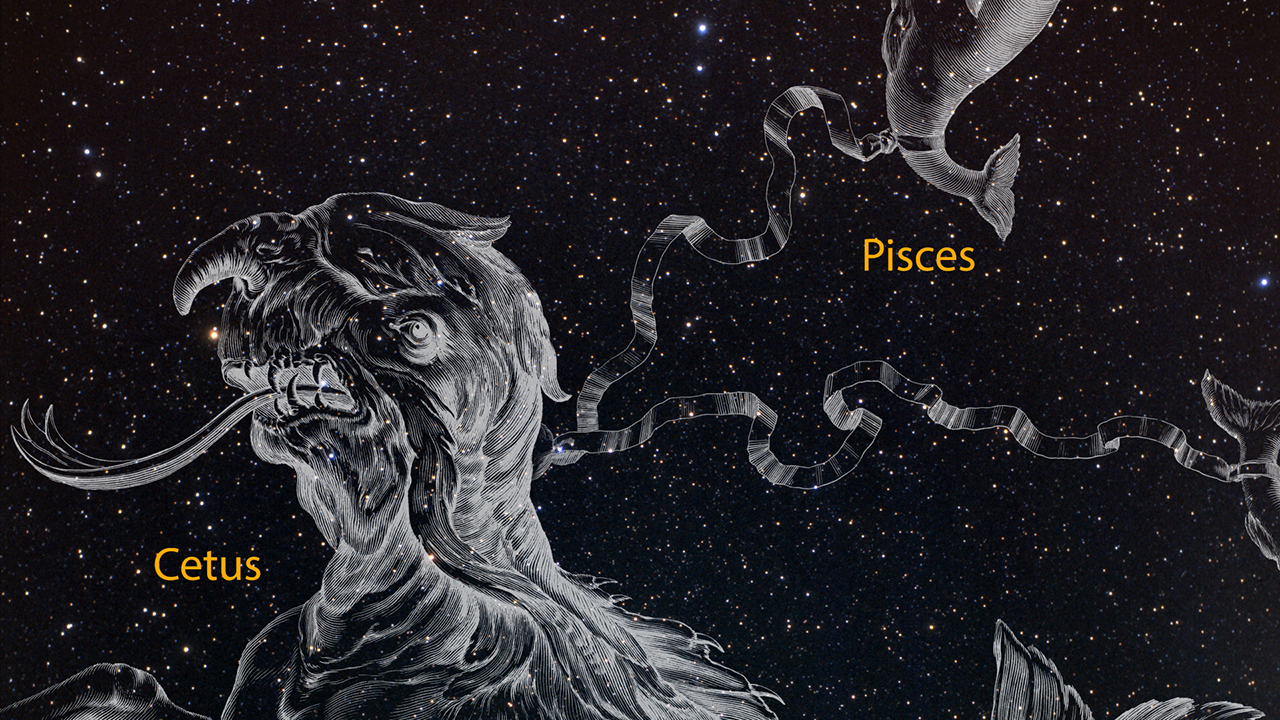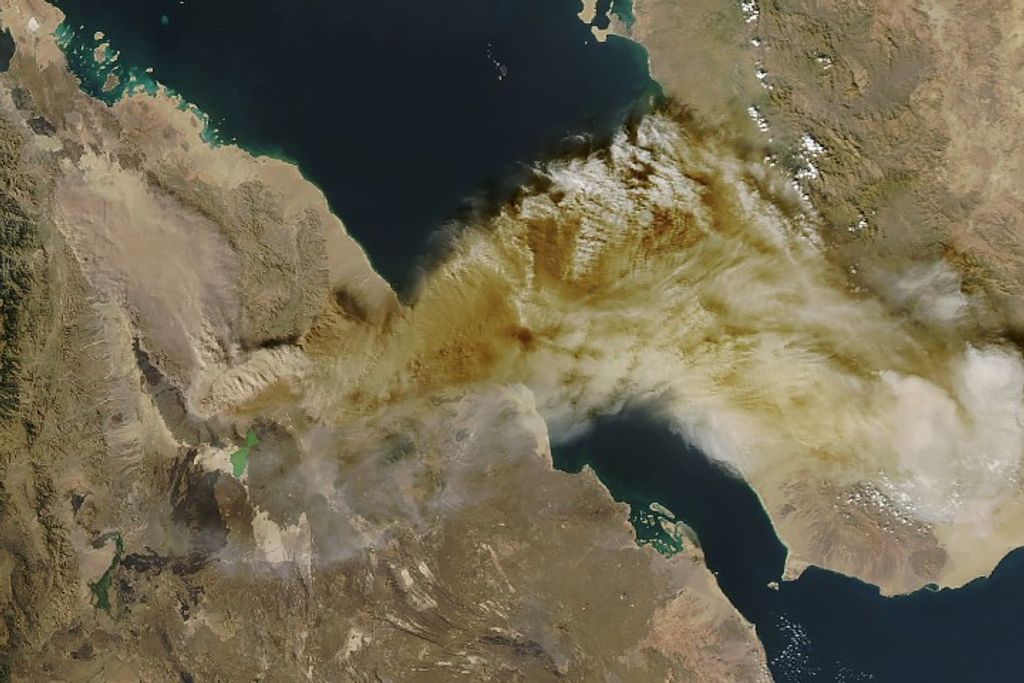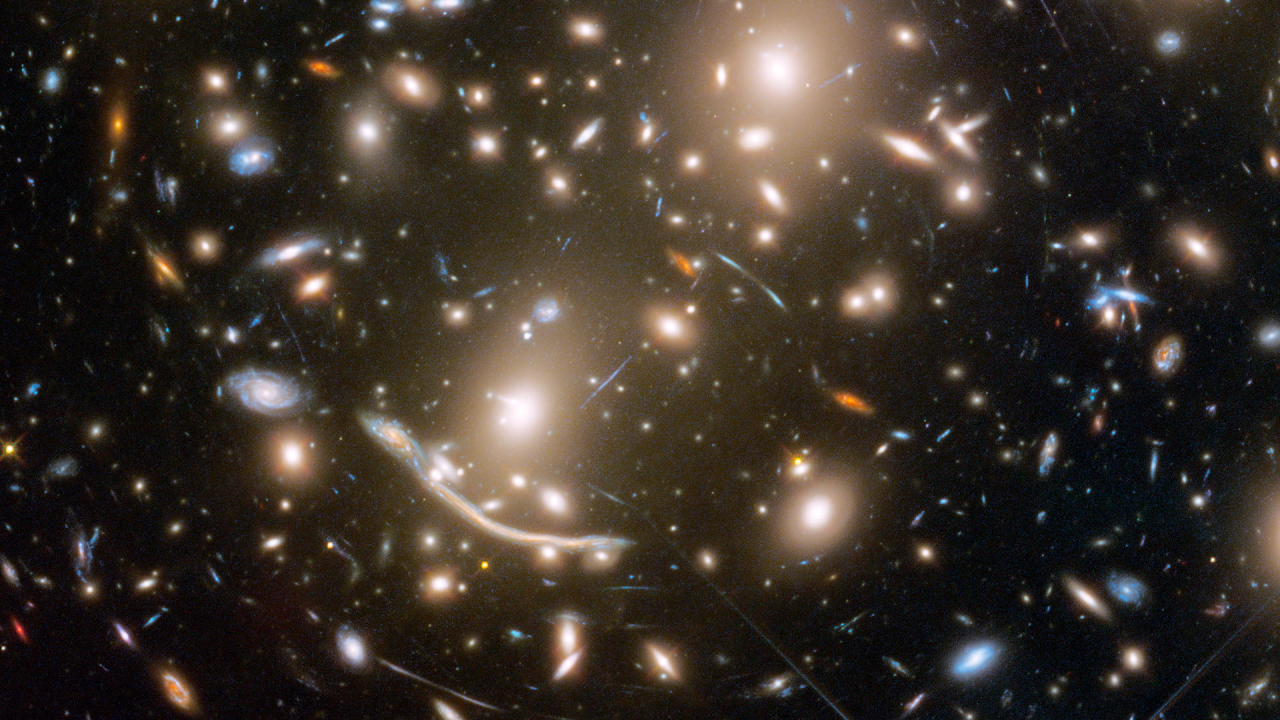1 min read
Abell 370 Parallel

This is a Hubble Space Telescope view of a random patch of sky that reveals how the universe looks at large: a "wallpaper" of innumerable galaxies spread across space and time. They offer a wide assortment of majestic star cities that vary in age, shape, and stellar populations. It’s a narrow view down a corridor that stretches back in time for billions of years.
The wide range of rich colors comes from the fact that this snapshot is assembled from images taken in visible light as well as near-infrared light. The reddest objects in the image are presumably the farthest galaxies, whose light has been stretched into the red part of the spectrum by the expansion of space. The yellow objects are massive football-shaped elliptical galaxies that contain older stellar populations. The blue galaxies are disk-shaped pinwheels of ongoing star formation. The entire field is peppered with much smaller, fragmentary, blue galaxies – the "building blocks" ancestors of majestic spiral galaxies like our Milky Way.
This so-called "parallel field" was taken while Hubble was looking at the primary target, a massive foreground galaxy cluster, while another camera simultaneously viewed the adjacent, seemingly sparse patch of sky.
Such parallel fields increase the efficiency of Hubble for deep sky surveys, and yield new insights into the evolution of galaxies over billions of years.
About the Data
- Data DescriptionData DescriptionProposal: A description of the observations, their scientific justification, and the links to the data available in the science archive.
Science Team: The astronomers who planned the observations and analyzed the data. "PI" refers to the Principal Investigator.Abell 370 is part of the Frontier Fields Program. These data are from the HST proposals 11108 (PI: E. Hu, University of Hawaii), 11507 (PI: K. Noll, GSFC), 11591 (PI: J.-P. Kneib, Laboratoire d'Astrophysique de Marseille), 13459 (PI: T. Treu, UCLA), 13790 (PI: S. Rodney, JHU), 14038 (PI: J. Lotz, STScI), and 14216 (R. Kirshner, Harvard University). For more information, see http://www.stsci.edu/hst/campaigns/frontier-fields. - InstrumentInstrumentThe science instrument used to produce the data.HST>ACS/WFC and HST>WFC3/IR
- Exposure DatesExposure DatesThe date(s) that the telescope made its observations and the total exposure time.September 2009 - February 2015
- FiltersFiltersThe camera filters that were used in the science observations.ACS/WFC: F435W, F606W, and F814W; WFC3/IR: F105W, F125W, F140W, and F160W
- Object NameObject NameA name or catalog number that astronomers use to identify an astronomical object.Abell 370 Parallel
- Release DateMay 4, 2017
- Science ReleaseA Lot of Galaxies Need Guarding in This NASA Hubble View
- Credit

Blue: F435W + F606W Green: F814W + F105W Red: F125W + F140W + F160W

Related Images & Videos

Hubble Space Telescope Frontier Fields and Parallels
This is a gallery of the Hubble Space Telescope Frontier Fields. The top six panels are massive galaxy clusters that act as huge lenses in space, magnifying and stretching images of remote galaxies behind each cluster that are too faint for Hubble to see directly. While one of...

Zoom Into Galaxy Cluster Abell 370
This video begins with an image of the constellation Cetus, the Sea Monster, then zooms into galaxy cluster Abell 370. Located approximately 4 billion light-years away, the immense cluster is a rich mix of galaxy shapes. Arcs of blue light entangled among the galaxies are...
Share
Details
Claire Andreoli
NASA’s Goddard Space Flight Center
Greenbelt, Maryland
claire.andreoli@nasa.gov


































